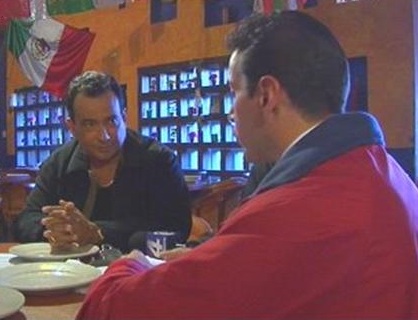Exposes by local media and the weekly discussion of restaurant food safety compliance might do something for inspection scores. Media pressure certainly affected L.A. over 12 years ago, leading to a revamped inspection system and the county becoming a U.S. leader for posting restaurant scores. Anecdotally, the coverage affects sales both positive and negatively. Pretty well every day media coverage of restaurant inspection shows up in our Google Alerts and most of the time what’s being reported is entirely expected: dirty sinks, insects, food out of temp, etc. 
Sometimes we get a jewel like this video. Ryan Wolf of Action 4 News (Brownsville/McAllen, TX) has a weekly restaurant inspection segment, Food 4 Thought. While a little over produced, sort of an homage to Adam West-era Batman with heavy yuck-factor B-roll, Wolf gets operators to talk about how reporting inspections affect their businesses. He also does a decent job at asking managers and owners why they ended up with a poor score.
In this week’s segment Wolf interviews an operator from Poncho’s, a restaurant with two poor inspections in the past eight weeks (a history that indicates some food safety culture issues). The owner says the biggest factor leading to poor inspections is a language barrier. Wolf calls the operator on it and says:
[Our viewers] don’t want to hear that. They want to know that there is an open line of communication and people are understanding that their safety comes first. Can you assure us that people are safe to eat here?
The operator answers, “Yes, regardless of the language barrier.” Not a great promise, especially considering their history.
I wrote a bit about food safety culture and how our food safety infosheets can be used to connect food handlers to the consequences of their actions in an article that was published in Food Safety Magazine this week.
A culture of food safety is built on a set of shared values that operators and their staff follow to produce and provide food in the safest manner. In an organization with a good food safety culture, individuals are expected to enact practices that represent the shared value system and point out where others may fail. By using a variety of tools, consequences and incentives, businesses can demonstrate to their staff and customers that they are aware of current food safety issues, that they can learn from others’ mistakes, and that food safety is important within the organization. Creating a culture of food safety within a business, which is stronger than just a program, means supporting an environment within a business where staff know risks, how to manage them and value not making patrons ill. A food safety culture requires application of the best science with the best management and communication systems, including compelling, rapid, relevant, reliable and repeated messages.
And doing everything you can to overcome language barriers. It’s difficult to compel staff to reduce risks if you can’t communicate with them.
